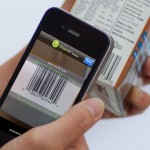I’m all about making my life simpler through technology — and being fortunate enough to live and work in the place where a lot of that technology is born, I have quite a bit of insight into what the latest tools are for making this possible.
With that in mind, I’ve been testing out a few websites and applications (along with my husband) over the past 6 months and wanted to share my current top five (in no particular order):
+Â Cake Health
An amazing site that helps you manage the endlessly confusing world of healthcare billing like never before. They’ll send you notifications of insurance claims, remind you of medical appointments, help you understand your costs versus your billed services, and even show you how you could be saving more money. You can also keep multiple profiles in one account, so keeping an eye on your entire family’s medical bills and appointments has never been simpler. Cake Health makes what was once the most complex part of American healthcare a piece of cake, with an organic cherry on top.
 +Â ShopWell
+Â ShopWell
ItÂ’s like having your mother, a nutritionist and a personal chef in your pocket. What should you be shopping for? Which product is better in an “apples to apples” (pun intended) comparison? Are you meeting your intended health goals? ShopWell can help you with all of these questions and more. They’ve also recently updated the app and it couldn’t be a more seamless and beautifully designed experience.
With the ShopWell app or website, you can keep your shopping lists in one place, scan new products at the touch of a button (in the store, in real-time), compare nutritional values, and be easily forewarned of foods that might aggravate food allergies.Â
+Â Gain Fitness
DonÂ’t have access to a super-fancy gym? Traveling for work and just need a calisthenic workout you can do in your hotel room? Can’t afford that yoga class down the street? Gain Fitness is your answer. Even if you only have 10 minutes to get in some quick exercises, they’ll customize a workout based on your goals and location. My husband loves this tool and canÂ’t stop using it.
 +Â The Eatery
+Â The Eatery
Chances are (and many studies prove this) you’re a much healthier eater if/when you’re recording your meals and you know your crowd is paying attention to your eating habits. The Eatery* puts that theory to the test by giving you a simple “snap and rate” tool. Constantly making the right eating decisions is tough and The Eatery not only helps you with those decisions, but might just show you a pattern or insight you otherwise would not have noticed (like my darn après-lunch cookie weakness).
*Requires an iPhone.
+Â Fitbit
If you’re even somewhat intrigued by the Quantified Self movement, Fitbit will be your new best friend. This tiny, clip-on device has not only become an essential part of my wardrobe, but has truly changed my behavior for the better. It even greets me by name and motivates me to get up and get going. Fitbit also links in to my Withings scale, so I can keep track of my weight and muscle mass all on one dashboard.
If you canÂ’t afford to buy yourself one — theyÂ’re $99.95 online and available at most electronics stores — you can still use their dashboard for free to track + log your diet, exercise, weight, sleep schedule, activity and more. Fitbit’s weekly emails give you a handy snapshot of your life over the past seven days and can help you to easily see just how much progress you’ve made.
If you’ve got a health tool you can’t live without, I’d love to hear about it. Send me a note and thanks as always.
